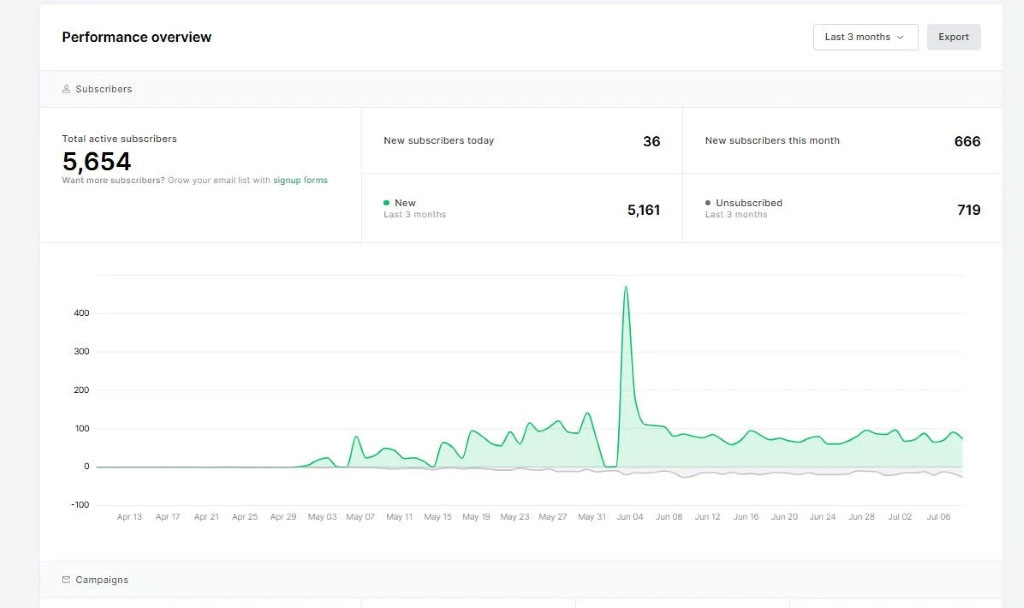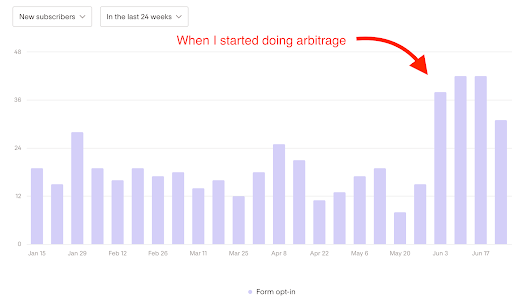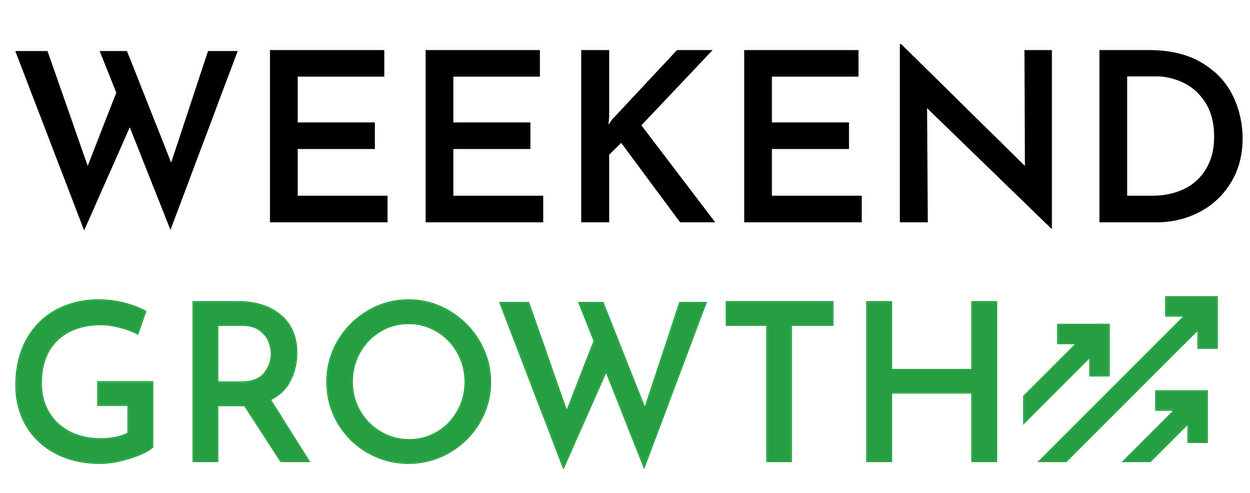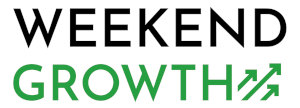I bought a newsletter recently, and now I’m on the path of re-engaging the subscribers, growing it with weekly emails, and adding monetization methods. If you missed the recap, you can read it here.
I love the prospect of newsletters, which is why I picked this one up. Weekend Growth has been both fun and profitable. I’m growing a newsletter via Facebook Ads for an HCU-hit site. And I recently discovered an email account of mine with almost 15k subs! What should I do with that?
Last week, I shared my plan for this specific newsletter, but this week, I want to share a more in-depth dive into exactly how to grow and monetize email newsletters. Buckle up 👇
Quick Navigation
Following the Advice of an Expert
Last year, Jon Dykstra from Fat Stacks Blog made a significant shift from relying heavily on SEO traffic to focusing on email newsletters for his main lifestyle niche content site. I know because my agency is his #1 recommendation for SEO work.
His transition offers valuable insights for anyone looking to build a successful email newsletter, especially if you’ve been hit by the HCU.
In today’s post, I’m sharing key takeaways from Jon’s presentation at the Alt G Conference on how to start a successful email newsletter.
A great resource to learn email marketing is Scott Delong’s course. He has had multiple 7 figure exits on newsletters. I took his course and gave me a huge head start on building my HCU-hit site newsletter. You can learn more about it here.
The Transition from SEO to Email Newsletters
Jon’s traffic chart from his largest site, started in 2014, showed a sharp decline in SEO traffic, which never recovered. This change led him to explore other traffic sources: Pinterest, Facebook, video platforms, and ultimately, email newsletters.
After evaluating different options, Jon chose email newsletters for several reasons:
- He was already familiar with writing newsletters for Fat Stacks.
- Email newsletters offered high-volume potential.
- They provided a more controlled and predictable traffic source compared to SEO.
To be fair, Jon also gets a lot of traffic to his site via Pinterest through these methods. But email is one of his primary traffic sources now.
You can see if your site is a good fit for Pinterest. Search 20,000 of the most popular Pinterest topics or interests for free here. Start trying different keywords or topics your site covers to see if there’s a match. Click here to give it a try.
Types of Newsletters and Monetization
Jon breaks down newsletters into four major categories:
- Health, Wealth, and Relationships: These are evergreen topics with high revenue potential per subscriber.
- B2C (Business to Consumer): Focus on lifestyle niches like Home and Garden and other passion niches.
- B2B (Business to Business): Target business audiences with specific industry needs, like marketing newsletters for plumbing business owners.
- Local Newsletters: Cater to specific geographic regions, providing content relevant to local residents.
Each type of newsletter has different monetization options, including:
- Selling products or info products
- Affiliate marketing
- Sponsored ads
- Driving traffic to ad-supported websites
- In-email ads
- Paid subscriptions
Detailed Steps to Building a Successful Newsletter
1. Choose Your Niche
It’s crucial to select a niche with ongoing interest. For instance, hobbies or industries with continuous demand for information (e.g., marketing for plumbing business owners) are ideal.
- Ongoing Interest: Ensure your niche has long-term engagement potential. People need to continuously seek out your content.
- Revenue Potential: Assess if your niche allows for multiple monetization methods. Examples include display ads, affiliate opportunities, digital products, etc
- Personal Passion: Choose a niche you’re passionate about, as it will require ongoing effort and dedication.
2. Get Subscribers
You need a cost-effective strategy to acquire subscribers. Paid ads (e.g., Facebook Lead Ads) are a scalable option once you understand your subscriber’s lifetime value. That’s what I’m doing for my HCU-hit site email newsletter.
My subscriber growth is ticking along:

Free traffic sources like Pinterest, Facebook, and Instagram can also drive subscribers. Andy Skraga came on the podcast recently and has a great free resource on driving organic Facebook traffic.
On that note, you can kind of double up here too. For example, I’ve run arbitrage to some high-RPM posts on one of my sites. As an added benefit, it’s also getting my email subscribers. Here is a chart showing what happened to new email subscribers when I started arbitrage.

And then there’s Sammie, my go-to for scaling Instagram traffic. I just interviewed him for the podcast (release pending) – he’s now making over $40k/month from IG traffic. You can get all those details here.
Either way, you decide to go, here are a few keys:
- Cost per Subscriber: Aim for a sustainable acquisition cost. Jon found success with Facebook Lead Ads. I have found the same. I’m paying around $0.30-$0.60 per new lead, but note that it is VERY niche dependent.
- Free Traffic Sources: Leverage platforms like Pinterest, Instagram, and Facebook to attract organic subscribers.
- Landing Pages: Optimize landing pages for conversions, ensuring they are aligned with your newsletter’s value proposition.
3. Create and Test Content
Experiment with different types of content and formats to see what resonates with your audience. Monitor metrics like open rates, click rates, and revenue per subscriber to optimize your strategy.
- Content Variety: Include a mix of informational articles, product reviews, and personal anecdotes.
- Engagement Metrics: Track open rates, click rates, and time spent on site to gauge content effectiveness.
- Continuous Testing: Regularly test different subject lines, content formats, and CTAs to see what drives the best results.
This is perhaps the most important part. The odds that you get all of this right out of the gate are slim. Don’t get discouraged. Testing, tweaking, and pivoting are all to be expected.
I’ve already seen a lot of success with testing different types of content in emails.
4. Align Signup Messaging
Ensure that your signup messaging clearly communicates what subscribers will receive. Misalignment can lead to high unsubscribe rates and poor engagement.
- Clear Value Proposition: Explicitly state what the newsletter offers and the benefits of subscribing.
- Consistency: Make sure the content delivered matches the promise made during signup.
This is where having a Welcome auto-responder sequence can be vital. A lot of people miss this, and we help people set these up because of how important they are. I was just at the ConvertKit conference and they talked about this a lot.
Results
Jon applied his strategy to his site, which involved:
- Testing Lead Magnets: Tried different incentives to attract subscribers.
- High-Volume Emails: Sent 1-2 emails per day to drive traffic back to his ad-supported website.
- In-Email Ads: Experimented with in-email advertisements, leveraging platforms like ConvertKit.
Jon also started a local newsletter for where he lives, focusing on events, live music, and unique local happenings. Despite its potential, the local newsletter requires more effort and time to attract advertisers and grow.
- Geographic Focus: Targeted content for local residents rather than tourists.
- Content Curation: Highlighted unique, lesser-known events to add value.
- Advertiser Outreach: Recognized the need for proactive sales efforts to attract local businesses.
Key Takeaways & Next Steps
- Newsletter Types: Identify which type of newsletter best suits your expertise and audience.
- Monetization Strategies: Understand the different ways to monetize your newsletter and choose the ones that align with your goals.
- Subscriber Acquisition: Develop a strategy for acquiring subscribers, balancing paid ads and organic growth.
- Content Creation: Focus on delivering valuable content that meets your audience’s needs and keeps them engaged.
- Testing and Optimization: Continuously test and refine your approach based on performance metrics.
Practical Steps for Implementation
- Research and Choose Your Niche: Spend time identifying a niche with long-term potential and high engagement.
- Develop a Content Plan: Create a comprehensive content strategy that includes various types of content to keep your audience engaged.
- Optimize Signup Forms: Ensure your signup forms are clear, compelling, and aligned with your content.
- Leverage Multiple Traffic Sources: Use a mix of paid ads and organic traffic to grow your subscriber base.
- Monitor and Adjust: Regularly review your metrics and make necessary adjustments to improve performance.
Email newsletters offer a powerful alternative to SEO, with less competition and more control. Jon emphasizes the importance of testing, data-driven decisions, and a strong monetization strategy. He also highlights the opportunity for excellence in a field where many established players are underperforming.

